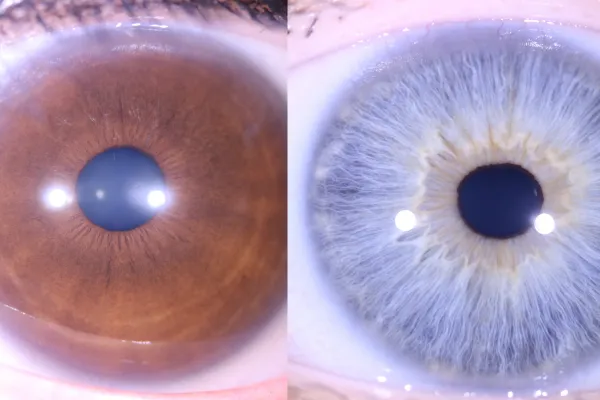Cobblestone Health
For Your Health, Naturally
Let's improve your health, naturally,
book and appointment by calling 403-850-5503
email [email protected]
or click to schedule your first appointment

Pupil Size & Shape in an Iris Assessment

When was the last time you noticed someone’s pupils? And what exactly did you notice?
Most often, size is the first thing that catches our eye. Large pupils might lead to the assumption of drug use, while small pupils may spark other conclusions. It’s true that lighting and certain substances definitely influence pupil size, and we need to remember that stress, nervous system activity, spinal alignment, medication side-effects, can also show up in the pupils. This is why they’re such a valuable part of an eye assessment.
One reason pupils are so practical to work with is that we only need to consider two aspects: size and shape. Simple, right? But within those two features lies a wealth of clinical information. Unequal pupils (anisocoria), irregular shapes, or pupils that don’t respond properly to light can all indicate deeper imbalances that are worth investigating further.
That said, it’s essential not to view the pupils in isolation. In professional practice, pupils are most powerful when assessed alongside the iris and sclera, and considered in light of the client’s symptoms and history. When we connect those dots, we move beyond superficial assumptions and gain a much clearer understanding of why the client is presenting with specific concerns. This helps us create more focused recommendations.
For students and holistic practitioners, this is a key principle: eye analysis is about pattern recognition and context, not snap judgments. Pupils may look simple, but when integrated with the rest of the eye and the client’s case, they provide insight into nervous system balance, stress load, and constitutional tendencies.
In short, the pupils are not just black holes that let light in—they’re part of the larger story the eyes are always ready to tell.
© Cobblestone Health Ltd; 2024 and beyond. All rights reserved.



